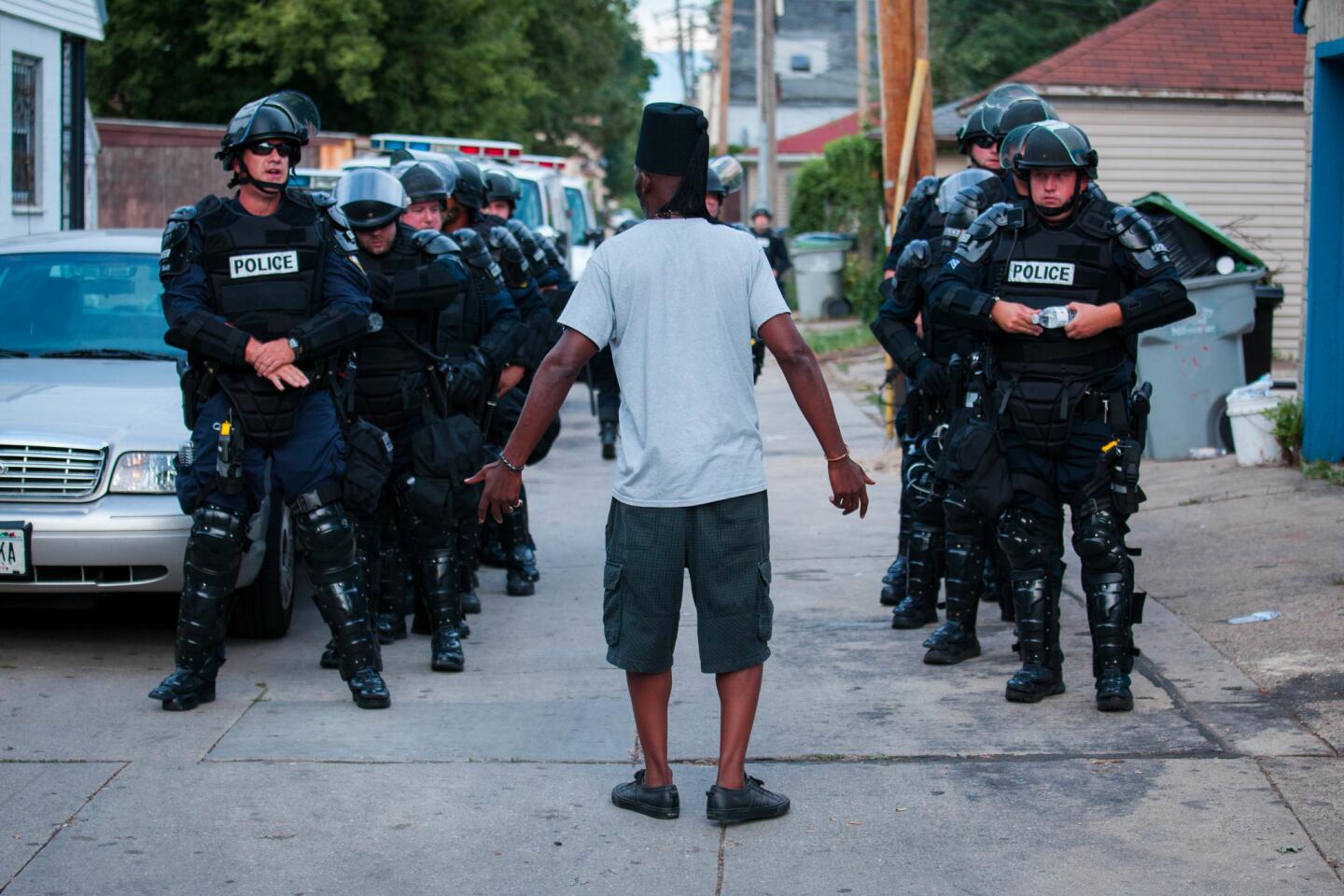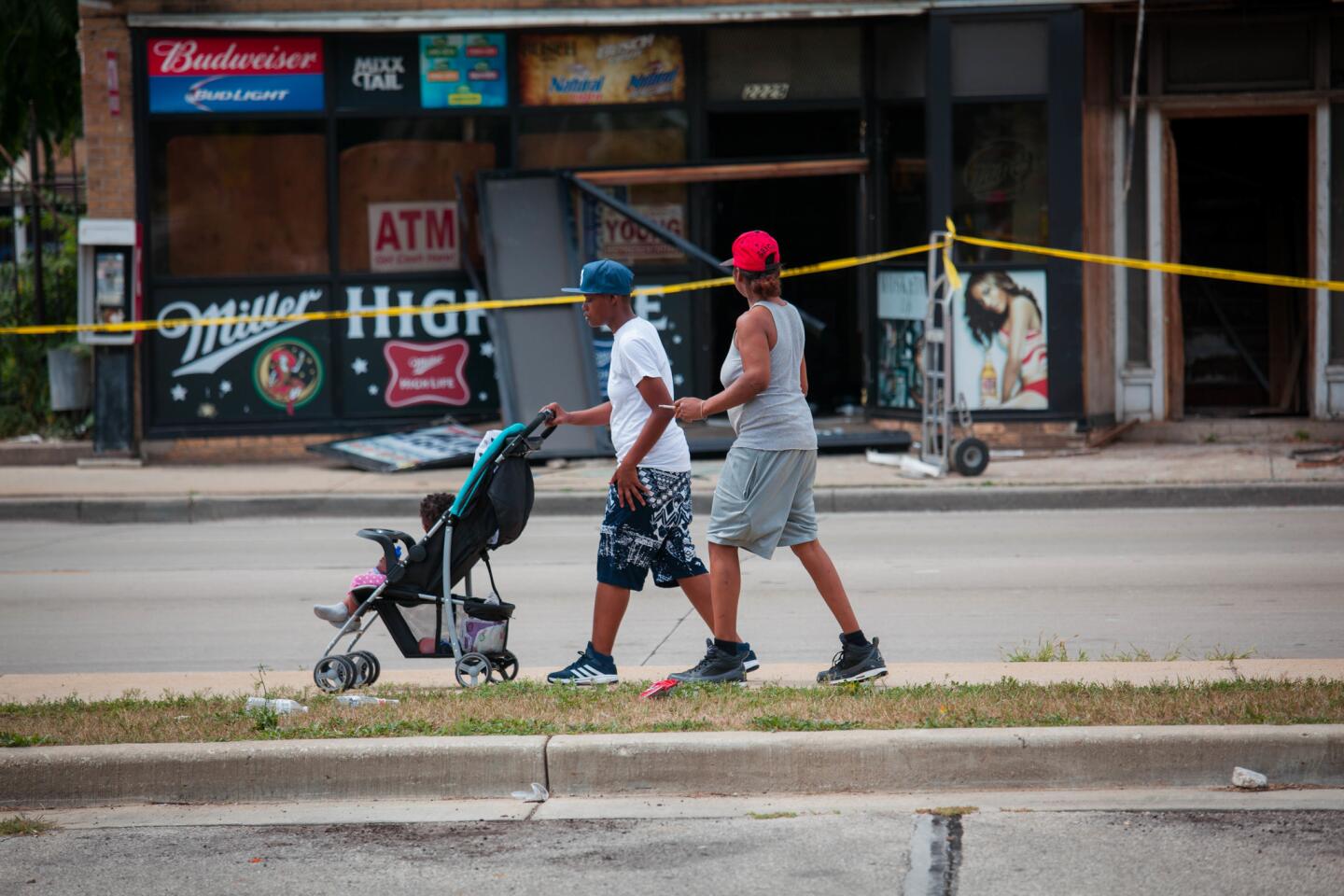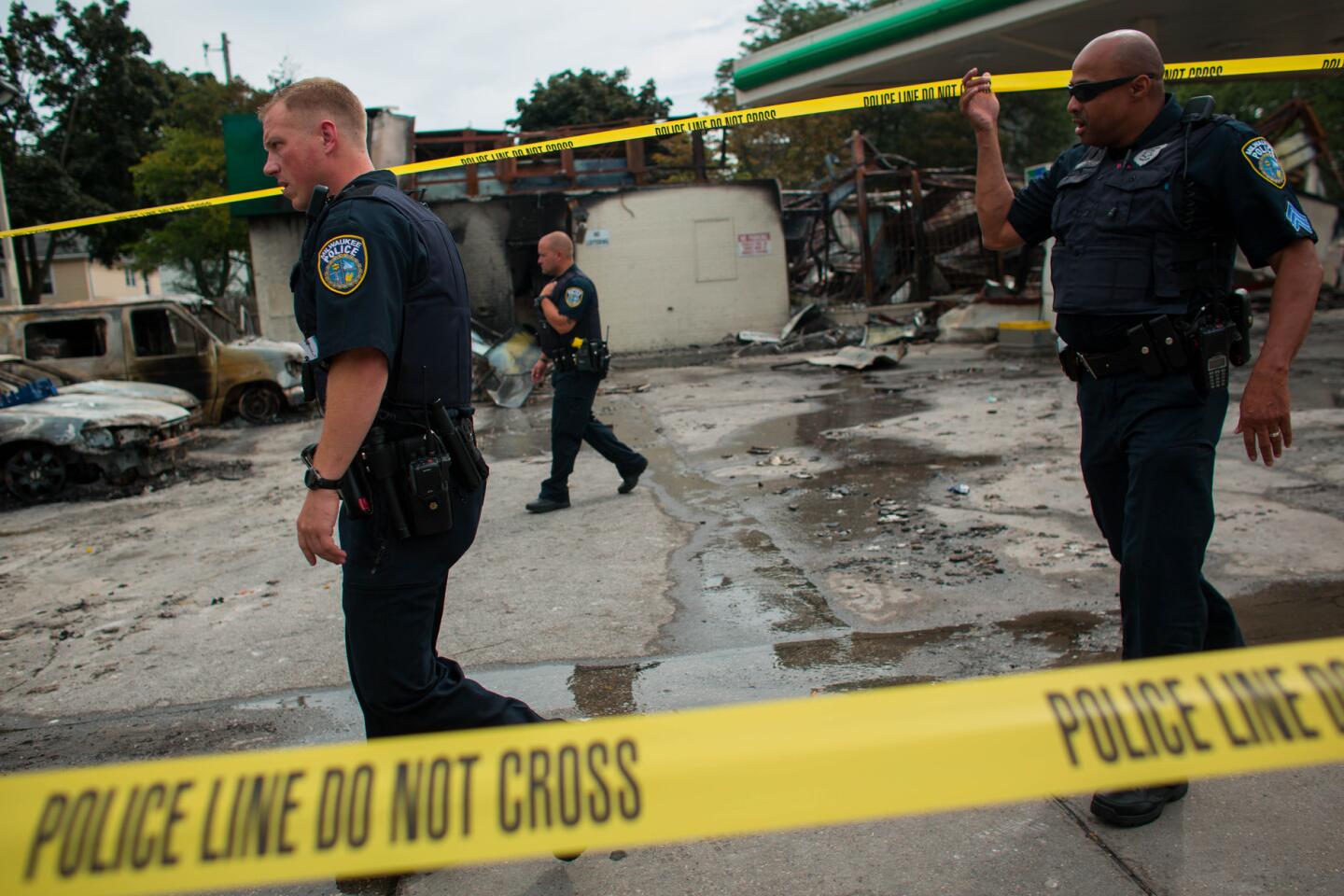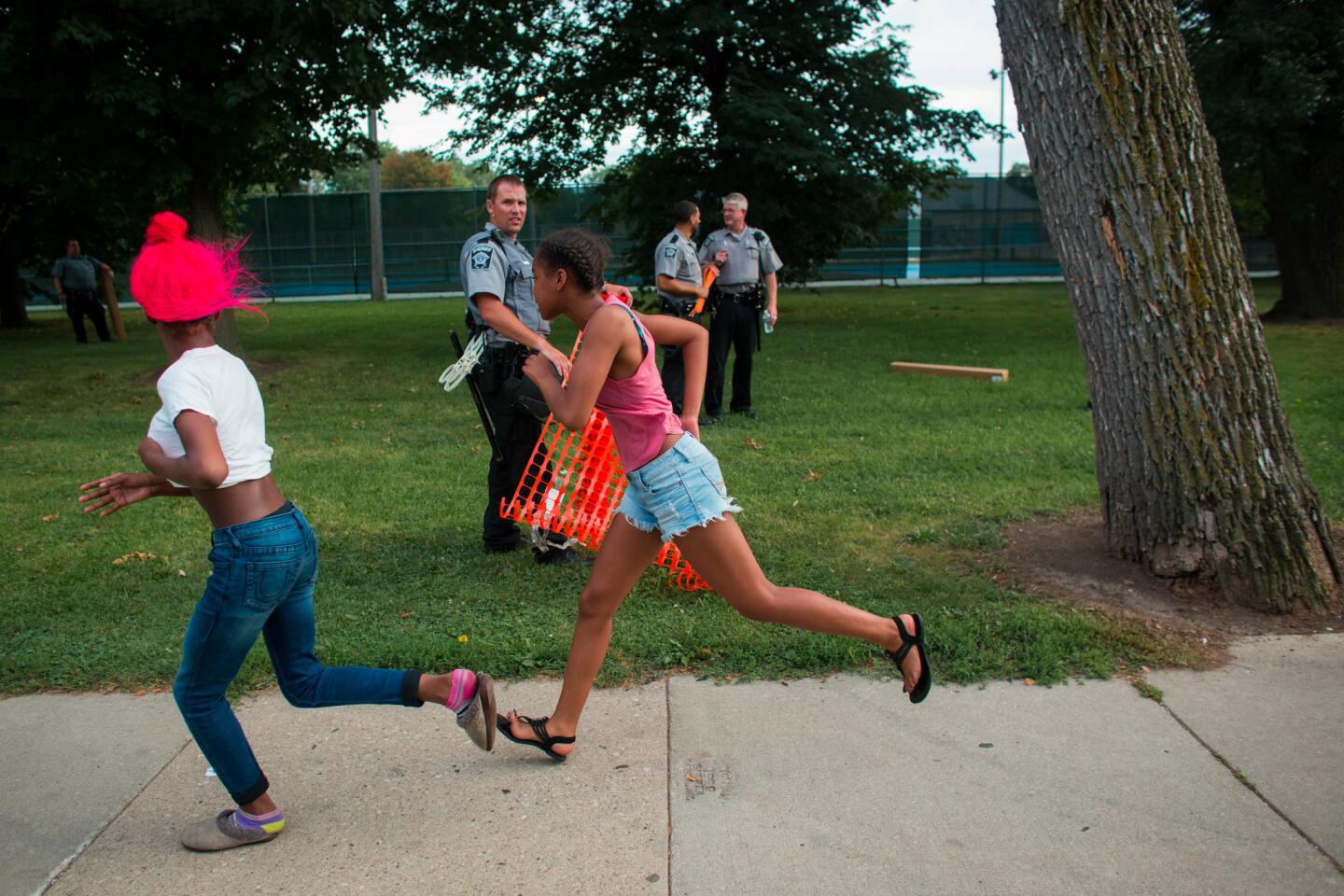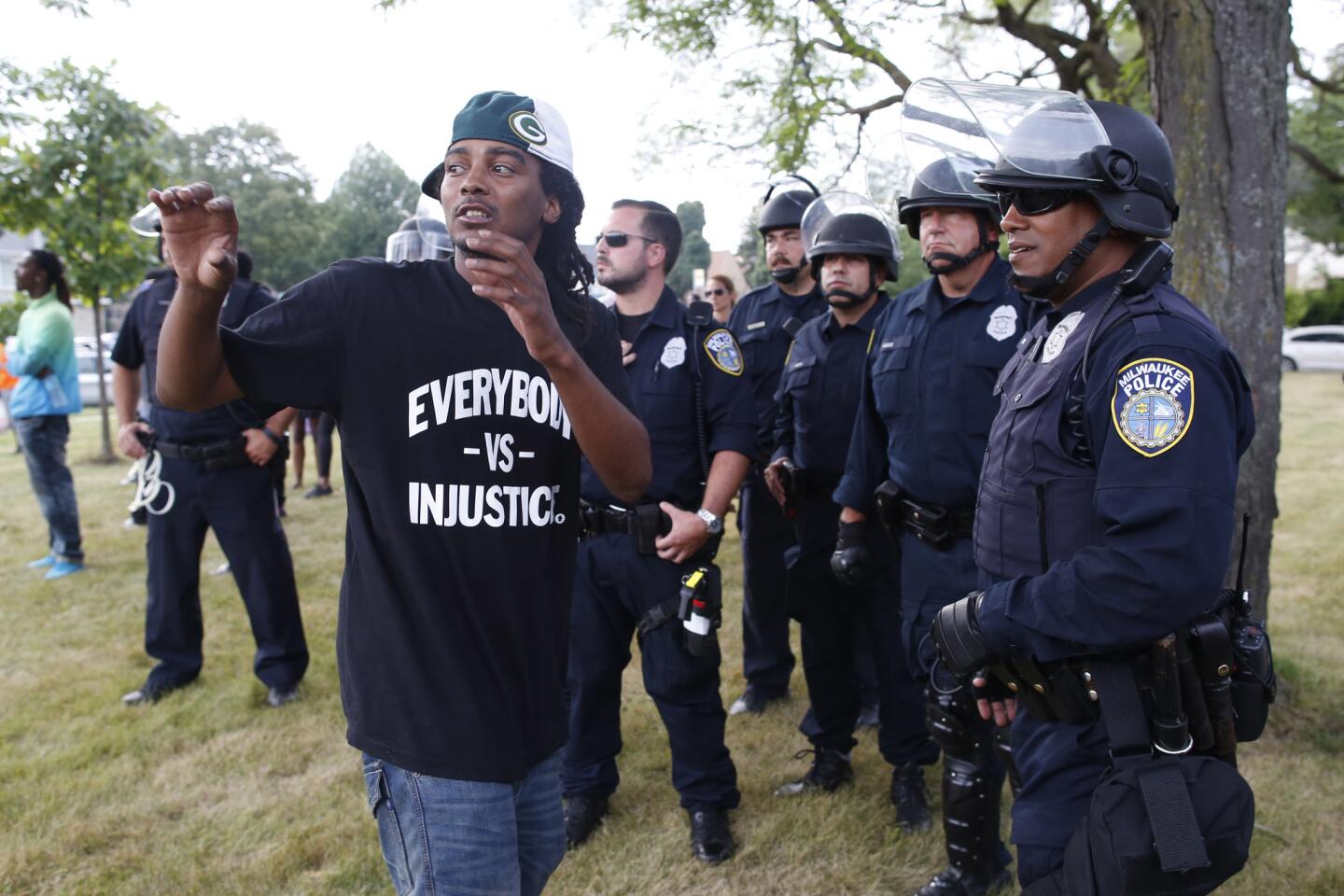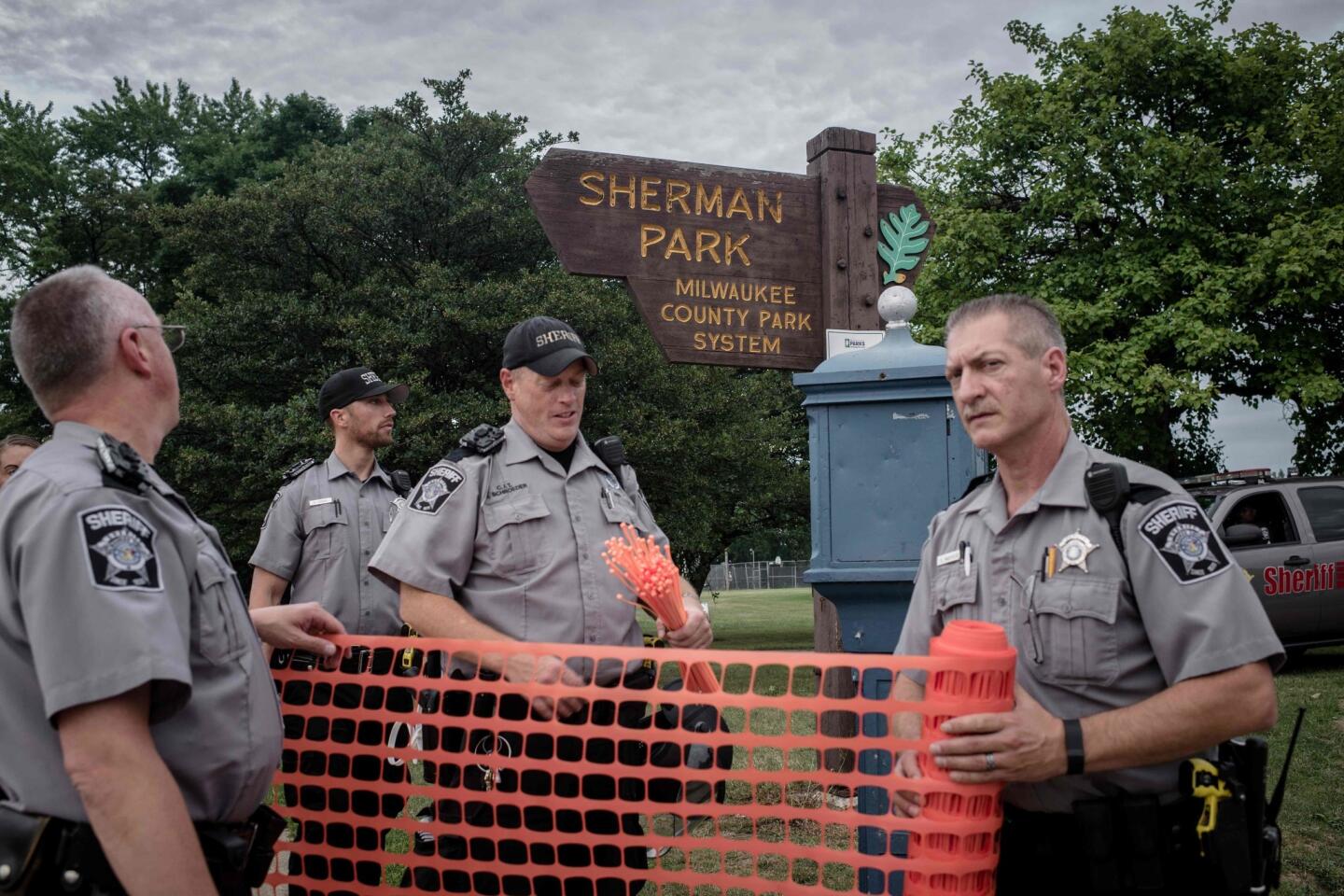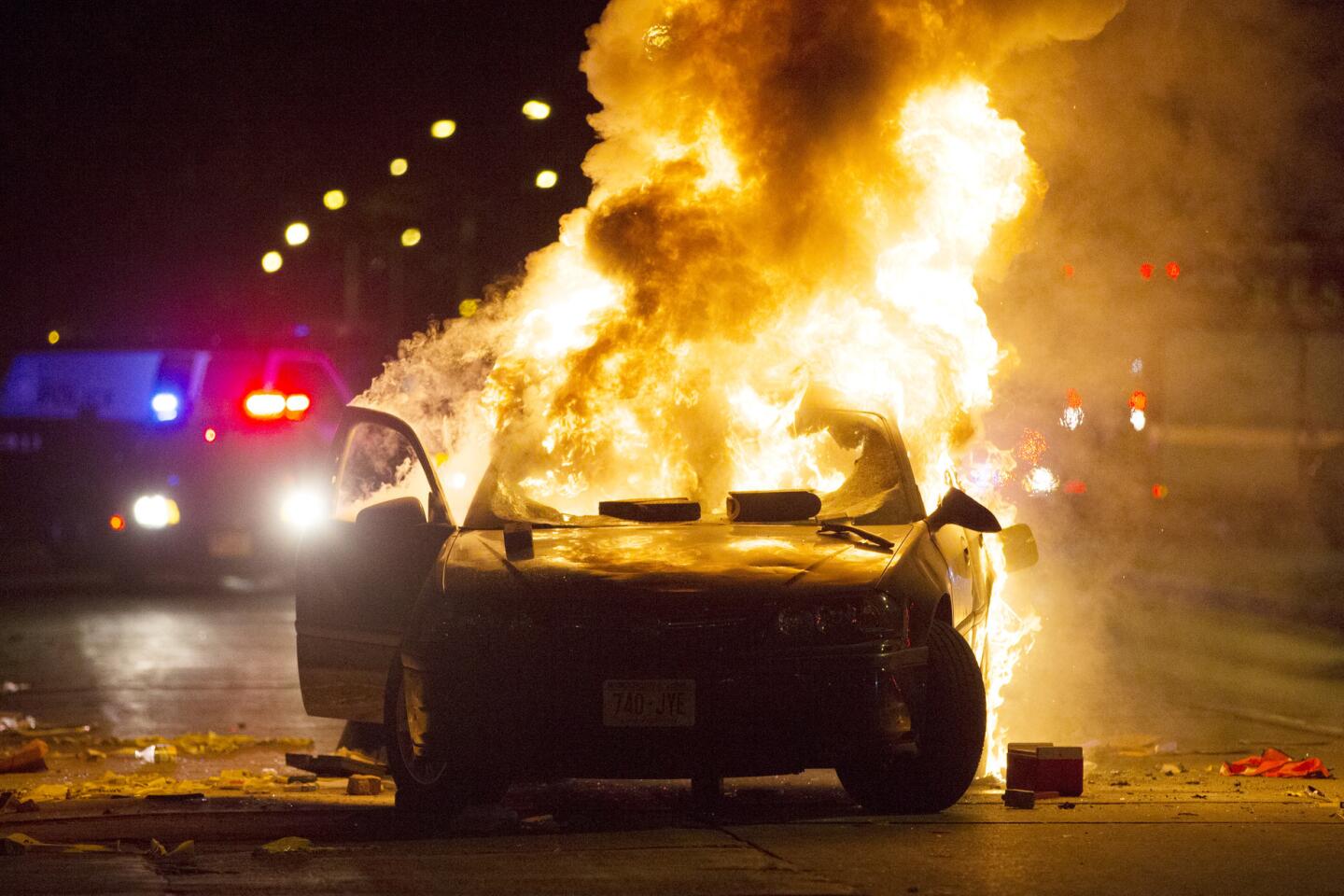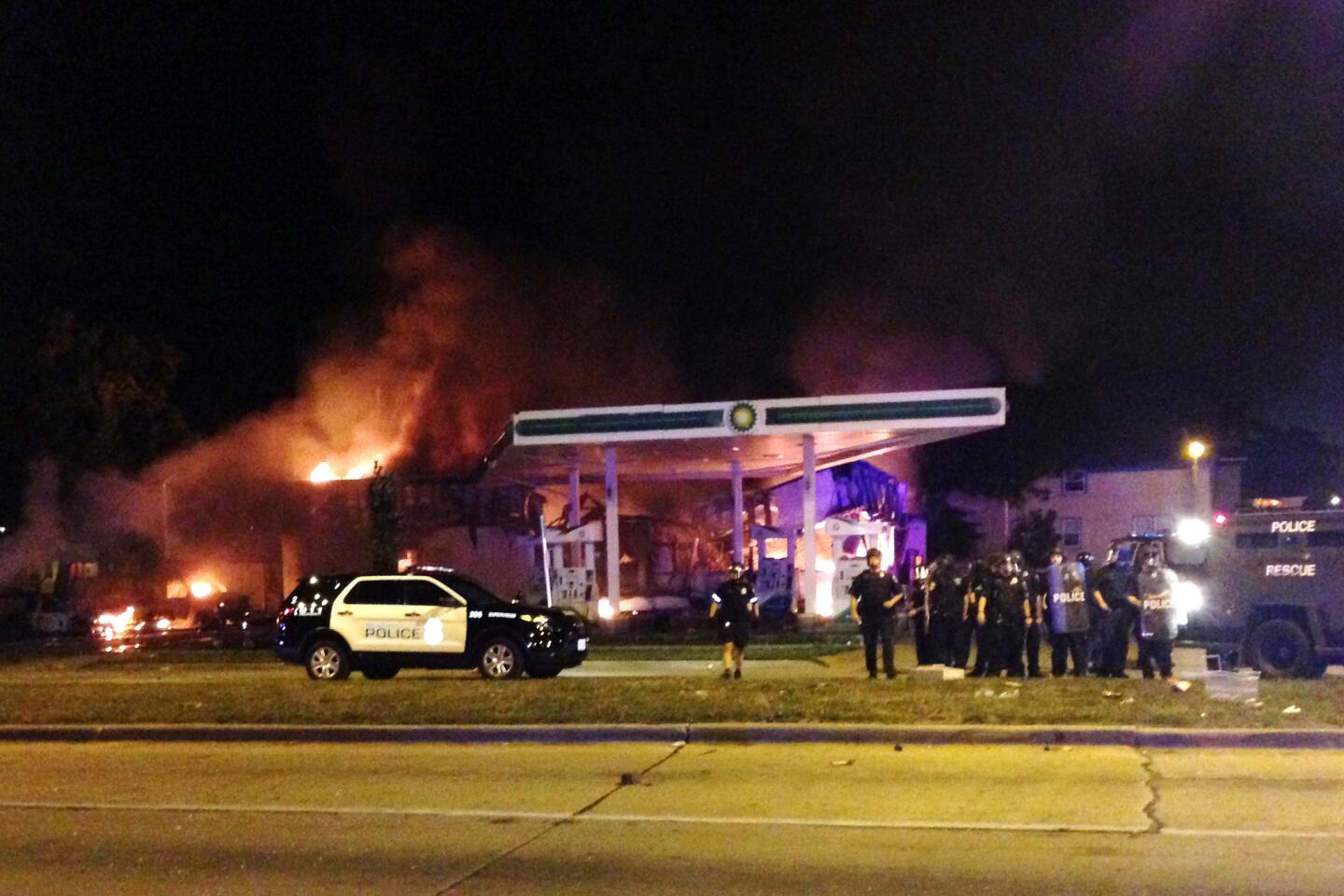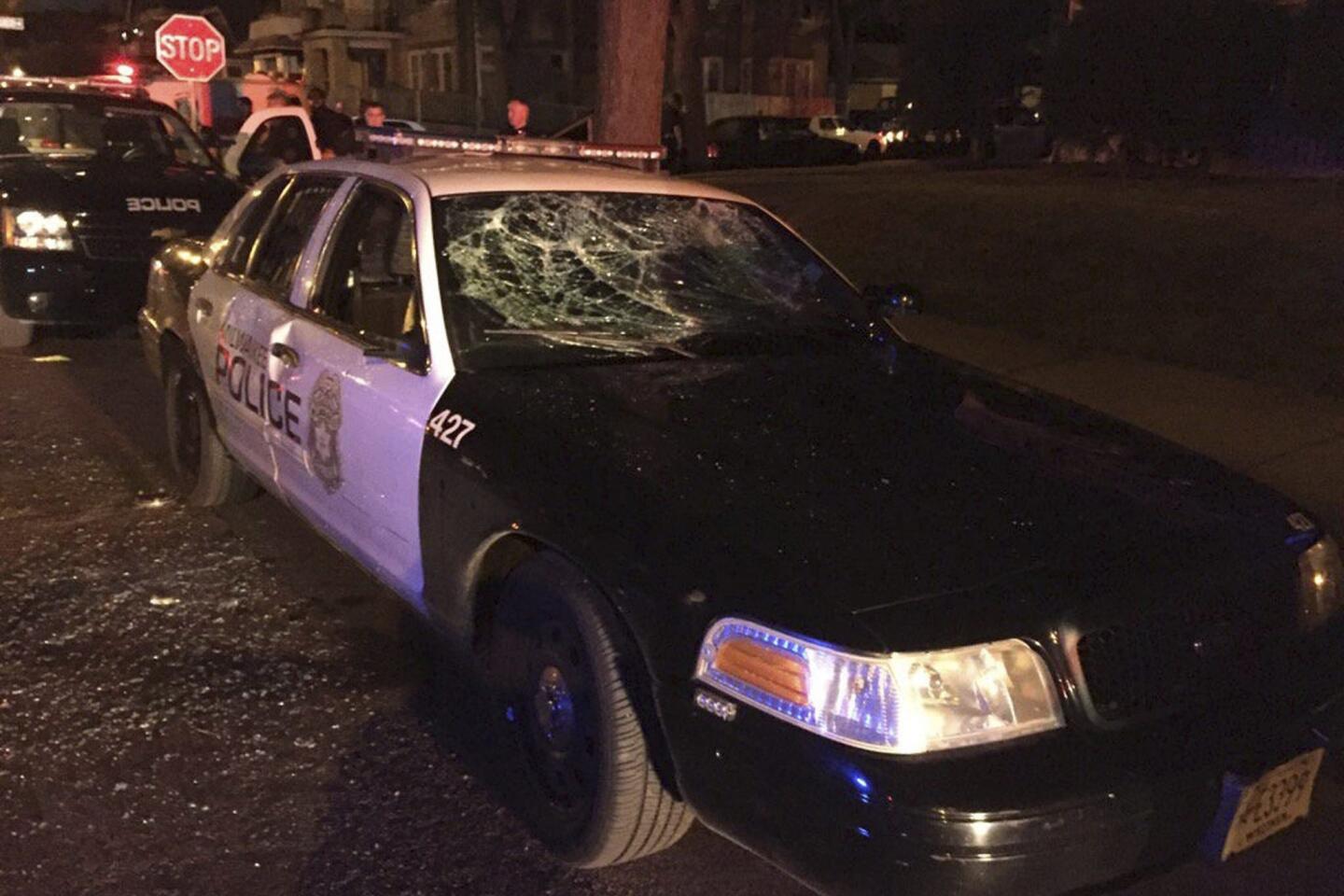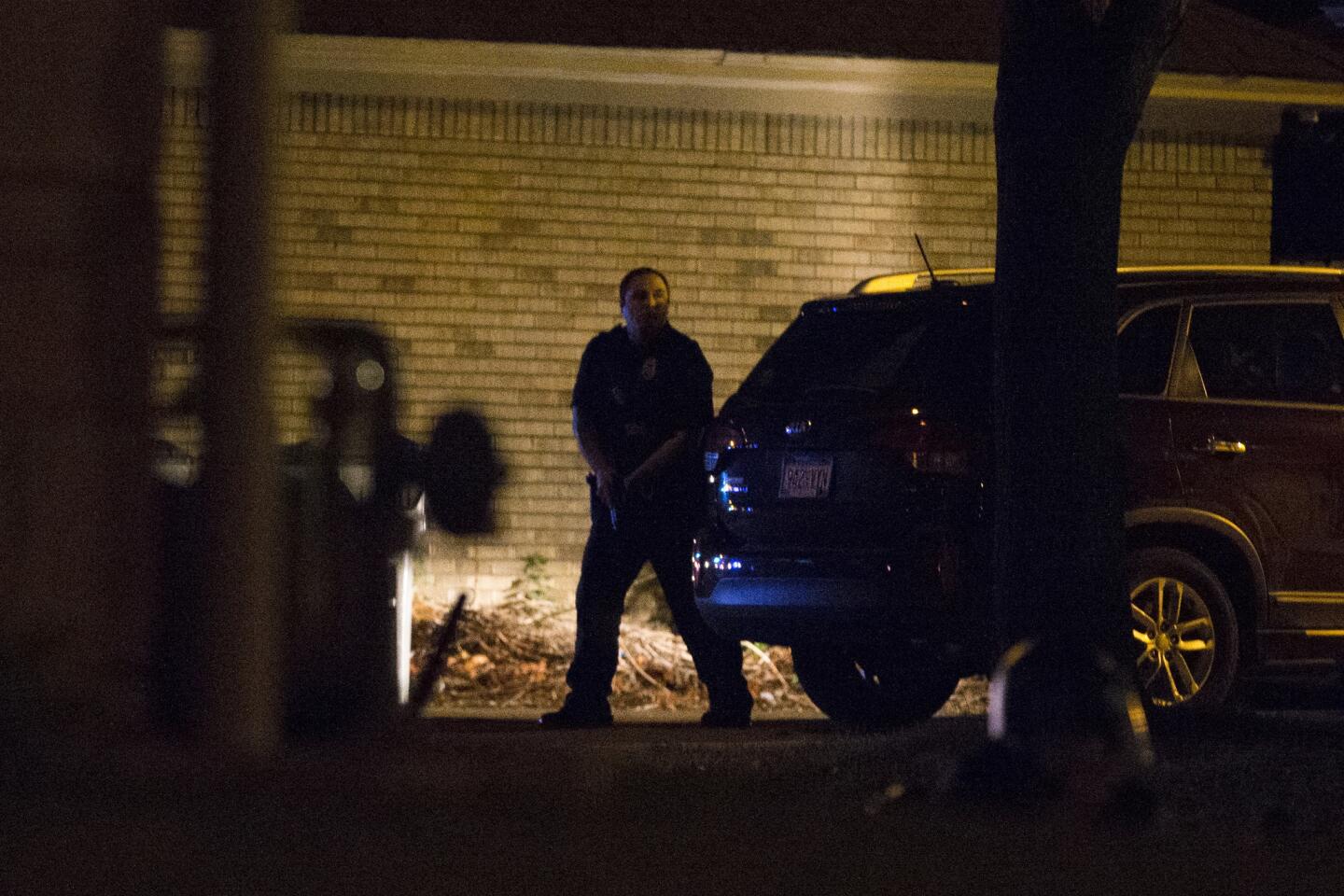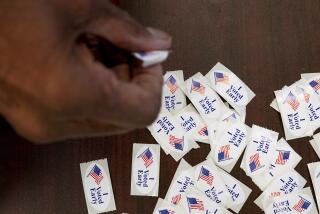A spike in homicides. Job loss. Bad schools. Milwaukee unrest ‘isn’t about one thing’
Reporting from MILWAUKEE — Two years ago, Supreme Omokunde was driving his Jeep Cherokee through one of Milwaukee’s business districts when a police officer pulled him over for expired license plate tags.
Omokunde, who is black, cracked open his window, he said, but the officer, who was white, wanted it rolled down all the way and threatened to smash it.
“He said he would drag me out of the car,” recalled the 37-year-old Milwaukee County supervisor.
Such stories abound on the largely black north side of the city, where riots broke out over the weekend after police fatally shot a black man who they say ran from his car after a traffic stop.
That police say Sylville Smith had a gun and that the officer who killed him was also black hardly seemed to matter to many of the protesters. Residents said the riots were about years of mistreatment by police as well as the lack of economic opportunities for blacks in one of the most racially segregated cities in the United States.
“Black Milwaukee is in some ways a city in a city,” said Omokunde, who was born in the Sherman Park neighborhood where the protests occurred. “This isn’t about one thing.”
Reggie Moore, a black man from Sherman Park who was appointed by the mayor this year to lead the city’s Office of Violence Prevention, said he had been on the streets monitoring the protesters and teaming with pastors and community groups in an attempt to bring calm.
“What’s happening isn’t random,” he said. “Last year, we saw a spike in homicides. There is job loss. There are bad schools. There are a lot of teens in this neighborhood who feel like they aren’t getting their fair share.”
About 40% of Milwaukee’s 600,000 residents are black. That gives the city the largest black population in Wisconsin, including many families in which parents and grandparents migrated from the South in the 1960s for factory jobs that quickly declined.
The poverty rate for blacks is among the highest anywhere in the United States, as is the rate of incarceration for black men. There are stark differences in average incomes between blacks and whites.
Black families are concentrated on the northern, poorer side of the city, where high school graduation rates are lower and the unemployment rate is higher. On the south and east sides, neighborhoods are whiter and wealthier.
The disparities also show up on the police force. Of the more than 2,000 officers, 17% are black and 18% are other minorities.
Tension between police and Milwaukee’s black community had reached a peak in recent years. In 2011, a black man, Derek Williams, died in the back seat of a police car after struggling to breathe. The officer in front, Jason Bleichwehl, was fired last month, but activists were disappointed that it was for “nondisciplinary reasons.”
In 2014, a white officer shot and killed a 31-year-old mentally ill black man, Dontre Hamilton — one of several controversial police shootings of black men. Protests ensued after the district attorney and federal prosecutors declined to pursue cases against the officer, who was fired.
Last year the city moved to settle a lawsuit for $5 million with 74 black residents who had sued over accusations that police had subjected them to body cavity and rectal searches by officers.
The U.S. Department of Justice agreed to a review of its police last year after a request from the chief. The review, which will look at how police treat black residents, is expected to be completed next year.
“The situation for black people here is getting worse,” said Vaun Mayes, a 29-year-old activist who has led protests against police shootings over the years.
“You have businesses closing that employ young black people,” he said. “Schools don’t have enough funds. Then you blame them for sitting outside all day with nothing to do but get into a fight.”
Mayes lives in Sherman Park, a once-middle-class black neighborhood now scarred by foreclosed homes and boarded-up buildings. In the wake of the shooting Saturday, the rioters burned down a gas station, an auto parts outlet and a liquor store. It’s unclear why those businesses were targeted.
Sherman Park is 12 blocks long and 30 blocks wide. The protests have been clustered around a police precinct and the corner of North Sherman Boulevard and West Burleigh Street.
Police made 14 arrests late Sunday after declaring that the protesters were part of an unlawful assembly. Police said 30 shots rang out through the early morning Monday, at least one of them sending an 18-year-old man to a hospital. Police said they were looking for suspects and did not release any more information about the man.
Officials were struggling with how to quell the unrest. On Monday, Mayor Tom Barrett said the city would begin enforcing a 10 p.m. curfew for teenagers, and County Sheriff David Clarke instructed officers to cordon off the neighborhood’s namesake park near the protests. The park was closed before sundown, ahead of usual schedule.
By Monday evening, there were still about 100 protesters in the streets. Some huddled and sang and called for calm. In a news conference Monday night, city officials said streets had been quieter than they were during previous nights.
“We think we are in, comparatively speaking, a positive place,” Milwaukee Police Chief Edward Flynn said. He added that six people were arrested earlier in the day.
Earlier, Gov. Scott Walker visited with police officers in the city’s 3rd District. He also met the 123 Wisconsin National Guard troops who had been sent to the city but not been deployed to the streets. An extra 26 state troopers have been assigned to the county.
Under pressure from Walker and activists, the Wisconsin Department of Justice said it was “working expeditiously” to investigate the killing of Smith and release a body camera video from the officer who fired the fatal shots.
That wasn’t enough for some residents, including members of Smith’s family. Kimberly Neal, his sister, said she believed her brother wasn’t holding a gun when he was shot.
She called for an end to the violence, decried both the police for recent shootings and the people who had used her brother’s killing as a pretext to loot.
His death came during an already violent time in the city, as five people were killed in three non-officer-involved shootings between Friday night and Saturday morning.
Khalif Rainey, an alderman who represents the district where the riots occurred, also called for peace.
“While the residents of Sherman Park and Milwaukee’s impoverished neighborhoods have just cause for anger and frustration, absolutely nothing justifies the display of violence and incivility we’ve witnessed in our neighborhoods these past two evenings,” he said in a statement.
“In a neighborhood where the opportunities for employment are so few and far between already, it is foolish and counterproductive to take out your anger on the few businesses that choose to operate on your block,” said Rainey, who is black. “Looting and burning won’t create opportunities to get a job and get ahead in life.”
The governor, a Republican who has been widely criticized for supporting budget cuts to schools and public transit, also spoke to the complexity of the problem.
“If you want to address poverty, if you want to address living conditions, if you want to address housing — all those things are legitimate issues people have frustrations about,” Walker said. “But if you’ve got neighborhoods where businesses are burned down, where people are afraid to live and work, it’s only going to make those problems more difficult.”
There was one thing protesters and officials could agree on: Smith was only the catalyst for the riots.
“This department has had some major issues,” said one of the city’s black police officers, who was not authorized to speak to a reporter. “But this guy that was shot, he is not one of them. People are not invested in him. This was just the moment things exploded that had been building up.”
Jaweed Kaleem is The Times’ national race and justice correspondent. Follow him on Twitter, Facebook and Instagram.
ALSO
Donald Trump calls for ‘extreme vetting’ and an ideological test for would-be immigrants
Cash-strapped Baltimore expected to spend tens of millions on Justice Department police reform plan
DEA ends its monopoly on marijuana growing for medical research
UPDATES:
Aug. 16, 12:30 a.m.: This article has been updated with details about Monday arrests and a news conference.
This article was originally published Aug. 15 at 8:30 p.m.
More to Read
Sign up for Essential California
The most important California stories and recommendations in your inbox every morning.
You may occasionally receive promotional content from the Los Angeles Times.
